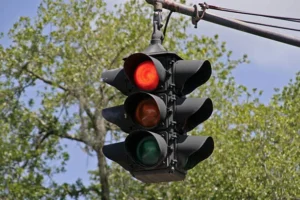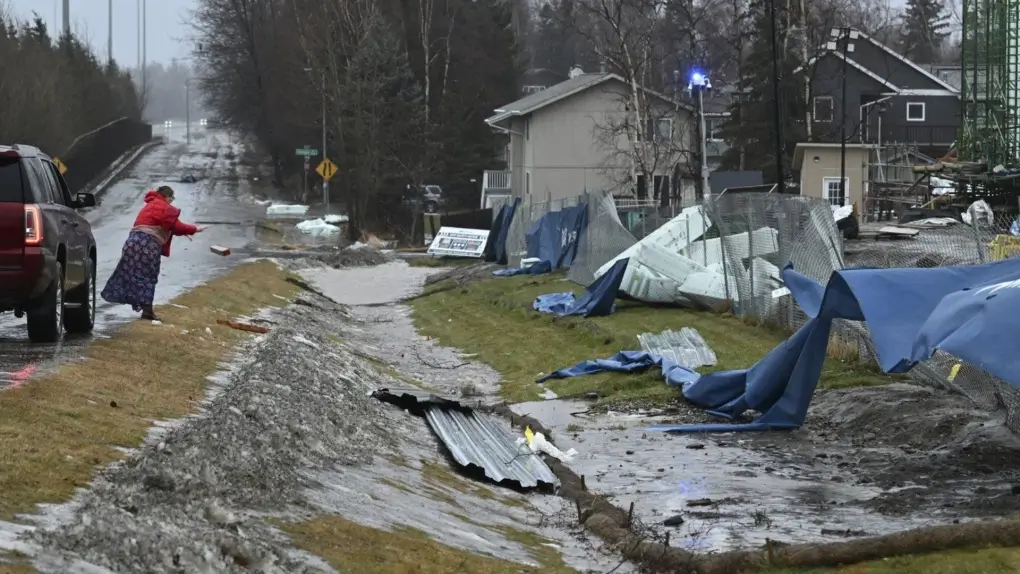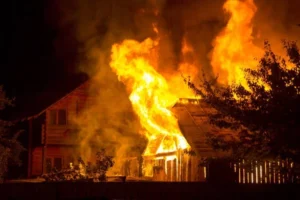A powerful windstorm swept through Anchorage on Sunday, leaving thousands of residents without power and causing widespread damage. The hurricane in Anchorage disrupted power lines, uprooted trees, and partially collapsed a pedestrian bridge over the Seward Highway.
The storm also caused over a dozen planes to divert, impacting air travel statewide. The National Weather Service reported wind speeds strong enough to impact power lines, topple trees, and disrupt air traffic.
Meteorologist Tracen Knopp confirmed temperatures reached over 40°F, unusual for this time of the year. Steven Wood, an Anchorage resident, witnessed his neighbor’s roof peel off and fly toward his yard. He said, “all I can yell is, ‘Incoming! Everybody run!'”
A pedestrian bridge across Seward Highway, a vital route connecting Anchorage to Southern Alaska, fell apart during the storm. The fence and roof collapsed onto the road, obstructing traffic and prompting a quick cleanup.
Shannon McCarthy, spokesman for the Alaska Department of Transportation, clarified, “The winds were the leading cause, but our bridge engineers will be out there today and may be able give us a more comprehensive analysis of what happened.”
Air travel faced significant disruptions, with three passenger planes, nine cargo planes, and one U.S. Air Force plane diverted to Fairbanks. After the hurricane in Anchorage locals scrambled to clean the debris scattered across the city, including trash bins, trampolines, and fallen trees.
Chugach Electric Association reported that power outages initially affected 17,500 customers. By Monday, the number had decreased to 5,700, but spokesperson Julie Hasquet warned repairs could extend into Tuesday. “When our crews show up for repairs, they don’t know what they’re going to find,” stated Hasquet.
Anchorage continues to recover from this severe storm, with residents and officials addressing widespread damage. The hurricane highlights the city’s vulnerability to extreme weather.
This news article was originally published by AP News.









